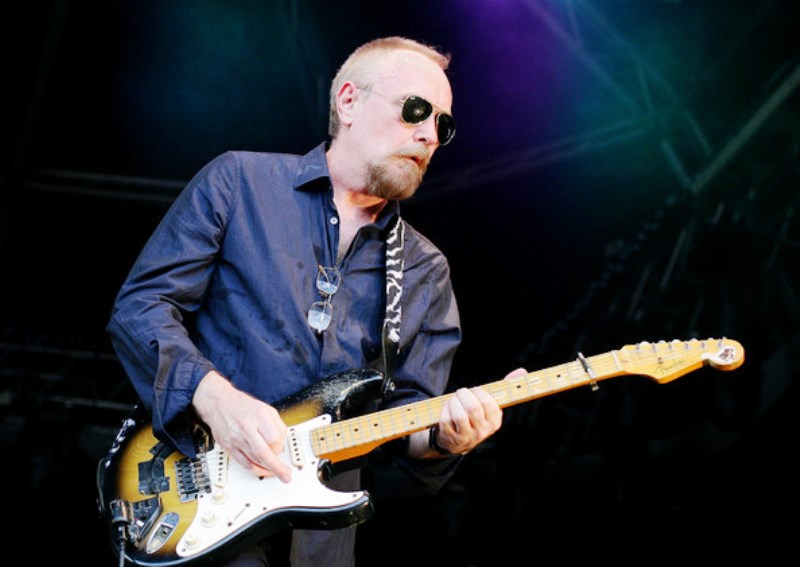Ed claims the song “I’m Stranded” was a musical statement about Brisbane, and any musician from that town with any sense of progression would have to leave his hometown. The Saints were isolated; Brisbane was made up of bands covering Eagle songs or playing repetitive Status Quo riffs. Kuepper’s own taste in music was eclectic and he owed a debt to the World Record Club, from whose mail order catalogue he scored LPs by the Stooges, New York Dolls and even Miles Davis.
The Saints were ahead of the pack; in fact, historically, they were amongst a small bunch of young musicians who came to the same conclusions, mostly independently of each other, across the globe. There were (unknowing) parallels with with Radio Birdman, Television and The Ramones. It was the mid-'70s and The Saints were soon to outgrow Brisbane and eventually took on the Poms on their home turf in something like a musical Ashes tour. The Saints were eventually repellled but during their first incarnation's time, released three of the most significant Australian albums of the late ‘70s.
Fast forward to Australia in 1981, and the world of Double Jay. Live to air concerts on the then-Sydney radio station were a weekly event and I would religiously tune in and record all this new music. The night I heard Kuepper’s post-Saints band the Laughing Clowns completely changed my musical perspective. I would carry around that cassette of their farewell to Australia show (en route to Europe) for many years. On their return I would have seen the band at least a dozen times.
Ed had created a band that was so on its own plain. As much part of the post-punk movement but with soul and heavily influenced by left-of-field jazz, they seemingly came from another planet. While the scene at the time was garage rock and so many bands had sprung up influenced by Kuepper’s first band, Kuepper had moved on. He was now listening to Coltrane and Mingus. The Laughing Clowns broke up in 1985 (and have reformed sproadically in the '00s.)
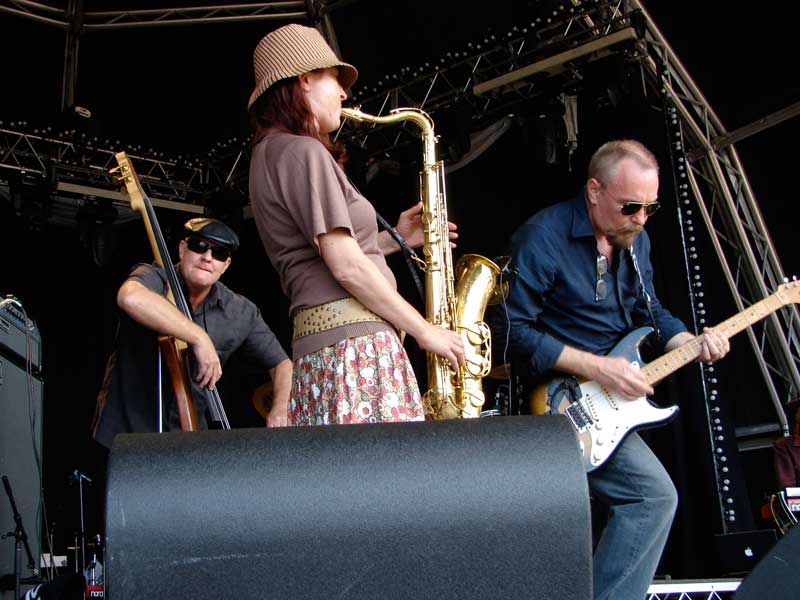 Ed Kuepper with the reformed Clowns at All Tomorrows Partys in Sydney 2009.
Ed Kuepper with the reformed Clowns at All Tomorrows Partys in Sydney 2009.
Ed’s post-Laughing Clowns solo band gigs were also stunning at places like the Hopetoun and the Trade Union Club in Sydney. If you saw those early shows you were almost certainly converted into a devotee. Eventually, Ed ventured to suburban beer barns. “Electrical Storm” was indeed the album of the year, stark, melodic in anyone’s top 10 Australian albums of the decade. Then followed a flirtation with a major label and a series of critically acclaimed albums like "Today Wonder”, “Black Ticket Day” and “Serene Machine”. There were ARIA award nominations and media attention.
Over the years, Kuepper has fallen in and out of being in vogue in the fickle Australian musical landscape, yet still commands a loyal fanbase across the globe. He’s toured as Nick Cave’s guitar player and at times flirted with soundtracks, and his output has always been consistent and unique. Reinventing his own work and reinterpreting his own songs.
The other aspect of Kuepper’s career has been that he’s a benchmark artist who has maintained a consistent “independent career” (with the exception of short flirtation with a major label in the late ‘80s.) He has illustrated how a musician can take control of his own destiny. Manager Sebastian Chase, when mentoring young bands, would often use Kuepper’s career as an example of being self-determined. Ed set up Prince Melon Records and, eventually in partnership with Hot Records, released his own music. He created his own mail order records. Today, this is really the only way an artist has to operate. From around 1980, Kuepper was forging uncharted territory. Proving you don’t need the machine.
Ed’s music has always been accompanied by very visual and powerful imagery. His album covers have always been striking. His partnership with a young art student, Judi Dransfield, has been artistic and romantic. The longtime Mrs Kuepper has produced Imagery that’s dreamlike, and powerful. She's also a skilled photographer.
I always believed that an article should be written about Ed and Jude. I read that Ed was playing the Recital Hall in Sydney on January 24 - as part of the 2015 Festival of Sydney activities, with a retrospective of his music (accompanied by strings from the Sydney Chamber Orchestra) and with Jude complementing the event with sets and backdrops - the next step was obvious.
* * * * *
Edwin: Judi - how did you guys meet?
Jude: When I first met Ed I was still an art student at Alexander Mackie College of Advanced Education. I met him when he was forming the Laughing Clowns in Sydney. The Saints had disbanded and gone their separate ways and he was working with a new band, creating innovative post-punk sounds.
I organised some gigs for them at the college. I also interviewed Ed for a newspaper and I still recall just how thrilled I was to be interviewing this guy who I admired so much. I loved the music of the Saints and I was attended all the early Laughing Clowns shows. I was (and still am) a very big fan!
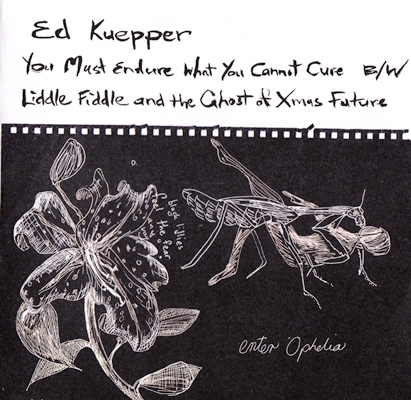
Edwin: Jude, looking at your art…the only reference point I can pick is Mark Chagall. It is a very European and almost dreamlike quality... do you agree?
Jude: Yes. Edwin , Mark Chagall has been an enduring inspiration for me. And I guess I'm finding inspiration in the same kind of places as Chagall - in dreams and the realm of the subconscious mind. The imagery that emerges from my dreams informs a lot of my ideas.
Edwin: When you work with Ed on album covers, was it a case of art already prepared, or do you design covers based on the inspiration of his music?
Jude: Sometimes it is a case of an artwork I've already done seems to fit with an album of songs that needs a cover – like the most recent cover for a vinyl single, "You Must Endure What You Cannot Cure" was produced this way.
Sometimes Ed gives me a brief and I'll listen to the music and produce a few artworks. Then we'll talk about which fits the best with the music.
Edwin: I asked Ed some questions about the Sydney Festival show on January 24th. What is your take on the event? Can you explain the approach you are taking?
Jude: I'm excited! It's going to be a very special event with the string section and the amazing acoustics of the City Recital Hall. It's a wonderful opportunity to hear Ed's music in this rich and resonant context, backed with superb professional musicians. I'm hoping to reflect and support the lustre and rich tones of the music with my projections. They will largely be semi- abstract images using colour and shape to convey the various shades and moods of the music.
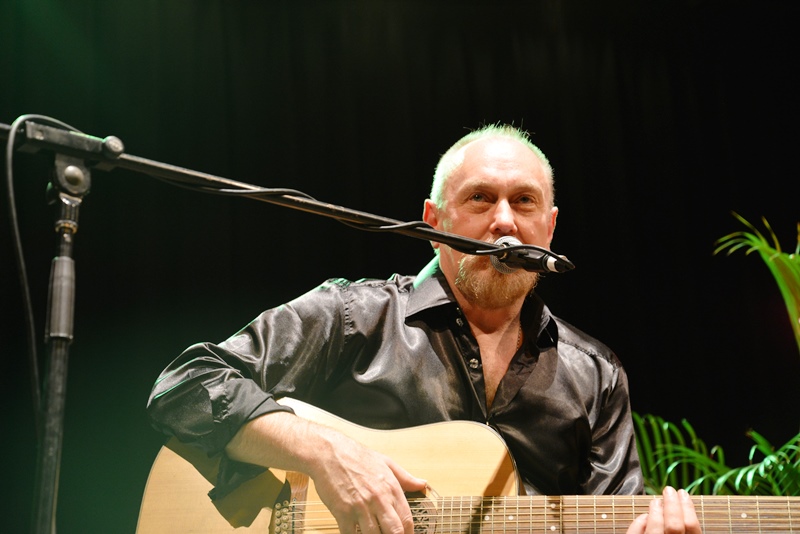
Ed in solo mode. Judi Kuepper photo
* * * * *
Over the years I had a few yarns with Ed, even supported his bands. I have always found his dry approach and aloofness part of his self-styled approach. I knew that people say he is hard to interview. I never felt that. I found him sharp and with a bucket full of wit.
I remember once at The Oaks (Editor: Sydney northside pub with a great beer garden) sitting there with Ed, maybe 20 years ago, defending the post-Kuepper version of The Saints. I recall saying: “But, Ed, Bailey has written a few good pop songs, and the albums are not that bad. Ed paused and with dryness, he snapped back: “Well I have heard there are some people with that view.” Classic Ed, and I was slapped around the gills. Let’s see if it happens again.
* * * * *
Edwin: Ed you have now been creating original music and playing live for 40 years. How do go about choosing a set list with what I estimate is almost thirty albums you have been involved with?
Ed Kuepper: The setlists depend to some extent on the type of show I'm doing, if it's promoting a new album or doing a retrospective. Recently I've been doing totally unscripted, by request shows to kind of break out of the formality of the ''this is the show/this is the audience'' type thing. It often worked really well. The City Recital Hall show with the string players won't be that loose, though.
Edwin: Tell me the direction of your latest album.
Ed Kuepper: The last couple of albums have involved a fairly radical reworking of material that was requested at shows that I've been doing. I'm evolving artistically and want to make sure I take what's mine from the past and have it now as well. To quote the James Brown song...''I'm a Greedy Man.''
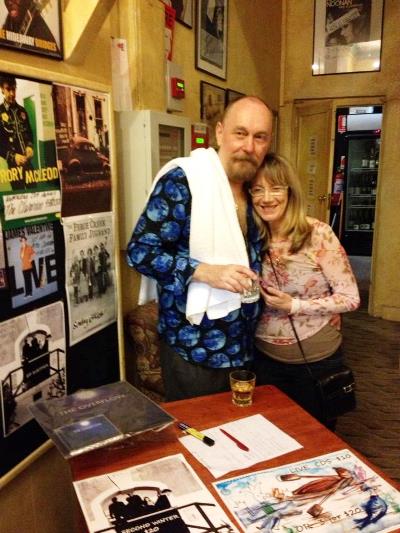 Edwin How did you meet Jude?
Edwin How did you meet Jude?
Ed Kuepper: Some angels came down from heaven, sprinkled stardust all around and then did a formal introduction.
Edwin: The association with artwork and covers, tell me about the exchange of ideas. How does this work?
Ed Kuepper: Sometimes it involves me asking Judi to realise a concept that I have (these can be pretty basic to be honest) and sometimes I'll just play her something that I'm working on and ask her to do something that she thinks fits. Other times, I’ll take something that she's doing or has done that I particularly like, or that I find suits what I'm doing at the time.
Edwin: These shows with collaboration with Jude with backdrops and lighting…can you explain the concepts behind the gig?
Ed Kuepper: The show is a career retrospective spanning everything I've done. I won't be sticking to arrangements of songs as they were done originally however, because I’m moving into a new phase of my career. It's not a nostalgia show. Judi's art will reflect a similar touching on the past of both her own work and things she's done with me but also that she's moving into a new phase of her career.
Edwin: You are working a string section...tell me about if any how this will affect the arrangements of the songs: and the choice of material???
Ed Kuepper: The string arrangements aren't going to be conventional string parts to pretty the songs up in any way. The strings' will add to the songs but not really determine the arrangements.
Edwin: Ed, what do think that 18-year-old kid with a buzzsaw Gibson SG and power-chording would think of the Ed Kuepper of 2014 playing at a recital hall 35 years later ?
Ed Kuepper: I would have been pissed off that anyone would describe my guitar style as a buzzsaw {which is actually an annoying sound, Edwin, in case you weren't aware.) I much preferred the way the French and German press described it at the time, which was as ''an heavenly and cosmically enlightened souffle of love designed to strip the ugly oppression of daily and menial existence and liberate the spirit of everyone for evermore”.
* * *
So I sign off, and I am really looking forward to this gig. Having a laugh as Ed hit me around the gills at the end of the Interview : but in his elegant fashion This show is going to special and along with Judi’s sets and a powerful retrospective, there will be certainly not be any buzzsaw guitars. Ed will also be joined by Peter Oxley.
Book tickets for "Ed Kuepper: The High Priest of All Security... A Career Retrospective With Strings" at the Sydney Recital Hall on January 24 here.

